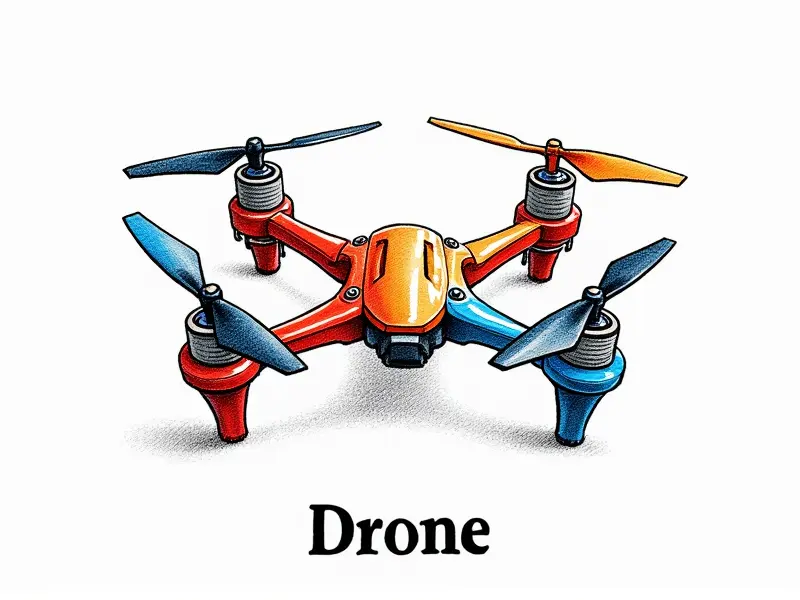How to paint RC airplanes

Best Paints for RC Airplanes Revealed
Picking the right paint is crucial when it comes to achieving a high-quality finish on your RC airplane. Acrylic paints are widely favored due to their quick drying time and durability, making them an excellent choice for beginners and experienced modelers alike. Additionally, enamel paints offer superior depth and gloss but require more patience as they take longer to dry.
For those looking to add a metallic shine or intricate details, consider using metalized paint or pearlescent finishes. These options can elevate your RC plane’s appearance with a touch of luxury and sophistication.
Vibrant Designs on RC Planes: Painting Techniques
Creating vibrant designs on your RC airplane involves more than just choosing the right colors; it's about understanding various painting techniques that can bring out intricate details. Spray painting is one such method, providing a smooth, even coat and allowing for quick application over large areas.
- Airbrushing: This technique offers unparalleled precision, making it ideal for adding fine lines, shading, and subtle gradients to your model.
- Dry Brushing: By using a brush dipped in paint with minimal moisture, you can achieve a weathered or distressed look that adds character to the plane's surface.
Easy Steps to Paint RC Models at Home
Painting your RC airplane at home doesn't have to be daunting. Start by preparing your workspace and gathering all necessary tools:
- Workspace Preparation: Ensure a clean, dust-free area with adequate lighting.
- Tools Needed: Paint brushes of various sizes, airbrushes (if applicable), thinning medium, masking tape, and primer.
Begin by cleaning the surface thoroughly to remove any oils or residues. Apply a light coat of primer to ensure better adhesion of paint layers. Once dry, you can start applying your base color followed by additional details using different techniques.
Quick Tips for RC Plane Painting
- Masking: Use masking tape or specialized masks to protect areas that shouldn’t be painted and create crisp edges.
- Dry Time: Allow each coat of paint to dry completely before applying the next one. Rushing this step can lead to smudging or uneven finishes.
RC Aircraft Customization with Paint
Customizing your RC aircraft through painting allows for endless creativity and personal expression. Consider incorporating unique patterns, national flags, or military insignia to make your plane stand out in the sky.
- Pattern Design: Sketch out designs beforehand on paper before transferring them onto your model.
- Symbols & Logos: Add small details like squadron badges or personal logos for a more personalized touch.
Top Tricks for RC Model Painting
To take your painting skills to the next level, consider these advanced techniques:
- Scribing Lines: Use a sharp tool to create fine lines along panel edges or other areas requiring definition.
- Faux Metal Finish: Apply metallic paint followed by a clear coat for a realistic metal appearance.
The Art of Customizing RC Planes with Paint
Painting your RC plane is an art form that combines technical skill and creative vision. By experimenting with different colors, patterns, and techniques, you can transform a basic model into a work of art.
- Layering: Build up layers of paint to achieve depth and texture in your designs.
- Weathering Effects: Simulate wear and tear using washes or dry brushing for realism.
How to Protect RC Plane Paint Jobs
Protecting the finish on your painted RC plane is essential to maintain its appearance over time. Applying a clear coat will not only seal in colors but also provide additional durability against scratches and UV rays.
- Clear Coat: Choose a high-quality clear coat specifically designed for RC models.
- Sanding Between Coats: Lightly sand between layers to ensure smoothness and adhesion.
Creative Ways to Paint RC Airplanes
Innovative approaches can set your RC plane apart from others. Consider using stencils for complex patterns or incorporating airbrush techniques to add subtle shading and gradients.
- Stencil Patterns: Use pre-made stencils or create custom ones to achieve consistent designs.
- Gradient Transitions: Blend colors seamlessly using an airbrush for a professional look.
Perfect Paint Job for RC Airplanes
Achieving the perfect paint job on your RC plane requires attention to detail and patience. Start with proper preparation, choose high-quality materials, and follow best practices throughout the painting process.
- Preparation: Clean surfaces thoroughly and apply primer for a smooth base coat.
- Application: Use appropriate techniques like spray painting or airbrushing depending on the desired effect.
Step-by-Step RC Airplane Painting Tutorial
Follow this step-by-step guide to paint your RC airplane:
- Clean and Prepare Surface: Wipe down the model with a solvent to remove oils and dust.
- Apply Primer: Use a fine-grit sandpaper if needed, then apply a thin coat of primer for better paint adhesion.
- Paint Base Coat: Start with your base color using an airbrush or spray can for even coverage.
- Add Details: Use smaller brushes and techniques like dry brushing to add intricate details.
- Apply Clear Coat: Once all paint is completely dry, apply a clear coat to protect the finish.
Conclusion
Making your RC airplane stand out with vibrant colors and unique designs can be both fun and rewarding. By selecting the right paints, mastering various painting techniques, and following proper steps, you'll achieve stunning results that showcase your creativity and skill. Remember to protect your work with a clear coat for longevity.

